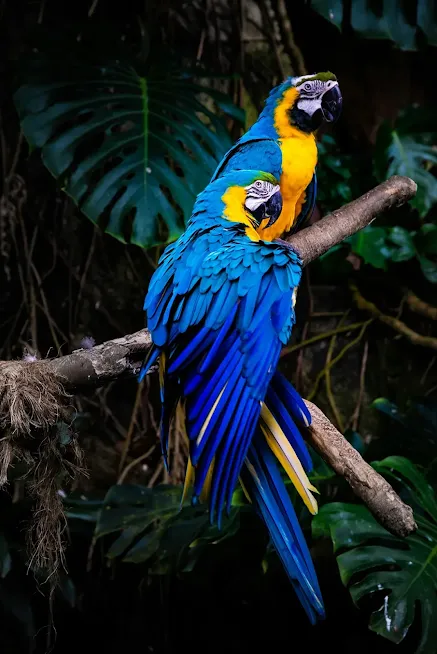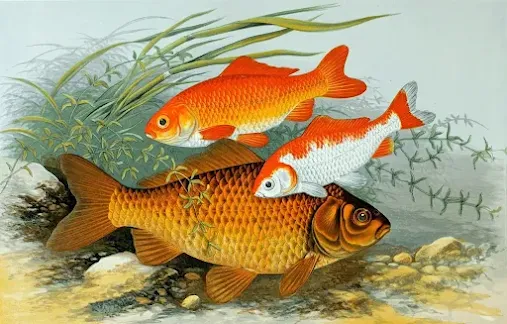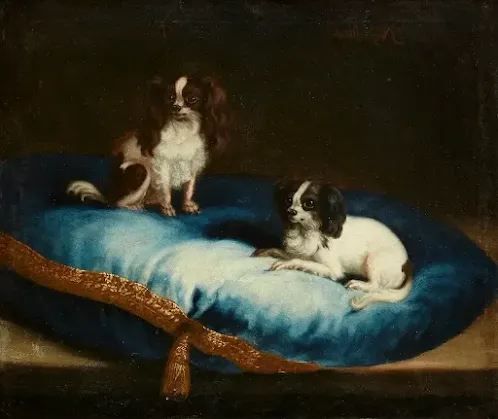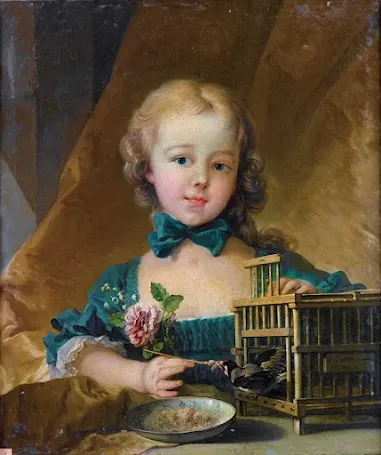Domestic Pets of Madame de Pompadour: The Pet Culture of Versailles
Madame de Pompadour's Domestic Pets
At Versailles, during 18th-century France, numerous influential individuals sought attention, but only one was prominent: Madame de Pompadour. The close confidante of King Louis XV, recognized for her patronage of the arts and wielding unusual political influence as a woman during that era, also had a great love for animals.Madame du Pompadour, born as Jeanne Antoinette Poisson, gained popularity in the French royal court through a blend of wit, charm, and intelligence. Her journey started when she caught the eye of King Louis XV at a masquerade in 1745, leading to the king falling for her. Madame du Pompadour held the title of King Louis XV's preferred companion for a period of approximately two decades, spanning from 1745 to 1764. Throughout this time, she held significant influence within the French kingdom.
 |
| Madame de Pompadour was renowned for her patronage of the arts, yet she also enjoyed surrounding herself with domestic pets, as depicted in this painting |
Madame de Pompadour's favorite dog breeds were Phalènes, Bichons Frises, and Papilons, as they shared her active and highly stimulated personality. Her loyal four-legged friends accompanied her at all times, from the sophisticated salons to the well-maintained gardens at Versailles.
Madame de Pompadour's pet dogs
Madame de Pompadour adored the Phalene dog named Inès given to her by the King. Inès frequently accompanied her, comfortably nestled in the luxurious fabric of her extravagant gowns.In a story passed down, Inès reportedly stayed by Madame de Pompadour's side during her serious illness, offering support and companionship until she got better, a gesture of loyalty that Madame de Pompadour always remembered.
Phalènes Dogs
Phalènes are petite toy dogs recognized for their cute appearance. Their ears resemble butterflies, standing tall when attentive but drooping at the ends. The Phalène has a flowing coat that is long, silky, and lays flat on its body with feathering on its ears, breast, legs, and tail. Even though the coat rarely sheds, regular brushing is important to avoid mats and tangles in the feathered sections, enhancing the dog's beauty.Phalènes are similar to Papillons, a small breed recognized for its butterfly-like ears. In fact, they developed from them. Over time, the process of selectively breeding led to the creation of the smaller, more compact Phalene dogs we are familiar with today.The Phalen dog breed originated in Europe, particularly in France and Belgium. The name 'Phalène' is French, meaning 'moth' or 'night butterfly,' which refers to the breed's distinctive butterfly-like ears.
Bichon Frise
During the Renaissance, French nobles were especially fond of the Bichon Frise, which was another popular dog breed. King Francis I and King Henry III both loved their Bichon Frise dogs, and King Henry III was so fond of his dog named Turlu that he took it everywhere, including to battle. Madam Pompadour was one of the most famous people who loved these small dogs, along with King Henry.Bichon Frises are friendly, lively, and sociable dogs. They thrive on human interaction, especially with children, and are known for their pleasant demeanor and desire for companionship. Bichons are often called jesters because of their animated and captivating characters. The origin of the Bichon Frise is thought to be in the Mediterranean area, particularly on Tenerife and Malta islands, and they are believed to be related to the Barbet, a type of water spaniel. In the Renaissance period, European nobles embraced Bichons and they were especially preferred by royalty.
Papilons
Madame de Pompadour also had an energetic Papilon named Mimi. Mimi's cheerful temperament and high energy levels in a petite frame quickly endeared her to all she encountered. Her behavior was so captivating that even the most skeptical courtiers couldn't help but be drawn in. Madame de Pompadour and Mimi developed a strong bond and she often enjoyed strolling with her in the pristine gardens of Versailles. |
| Papillons receive their name because the shape of their ears resembles butterflies |
Papillons are canines that possess a unique look and charming demeanor, along with grace, intelligence, and versatility. At first, Papillons also had ears that hung down like their Phalen relatives; however, over time, a unique characteristic developed where some of them had ears that stood up. Breeders selectively chose this trait, resulting in the creation of the modern Papillon breed.
The birds of Madame de Pompadour
In addition to her dogs, Madame de Pompadour was fond of exotic birds. In Versailes, her private chambers were adorned with colorful parrots and canaries
Apollo, a magnificent macaw with a piercing gaze and talkative tonque that repeated what had been heard throughout the day, was one of the birds she kept.
 |
| Macaws are highly intelligent birds with beautiful plumage. They were favored by Madame de Pompadour |
Macaws display a variety of colors like vibrant reds, blues, yellows, and greens in their feathers, along with long tails that enhance their appearance. Macaws are social birds with lively and inquisitive personalities who enjoy interacting with others; they tend to form strong bonds with their human companions.
Macaws are famous for their cleverness, skill in mastering tricks, and ability to imitate human speech and noises. Macaws need spacious enclosures in order to stretch their wings and move around without restrictions. In order to keep them mentally and physically engaged, a large aviary with many perches, toys, and enrichment activities is necessary. Madame Pompadour had plenty of space in her large apartments at Versailles to accommodate them. Macaws can also enjoy daily supervised play and interaction with their owners outside of their cages.
Madame de Pompadour owned a pair of lovely parrots called Coco and Bijou, believed to have traveled from Afghanistan to Versailles through the Silk Road. Decorated in emerald green and fiery scarlet, these beautiful creatures fascinated the public with their exotic appearance and the enchantment of the East.
Besides parrots, Madame de Pompadour also owned multiple canariesOne of the canarie species, called Chantilly, stood out for its beauty and pleasant sound that created a harmonious atmosphere. Madame de Pompadour enjoyed Chantilly's serenades in her personal rooms, where she often sat quietly and listened to their soothing melodies.
Was Madame de Pompadour the First Aquarist?
Madame de Pompadour had a fondness for animals that went beyond just dogs and birds, encompassing other uncommon species as well. For instance, she was among the first aquarists in the western world.The quick swimming and vibrant hues of the fish in the translucent water offered a refreshing break from the busy and often tough treatment she endured at Versailles as the king's favored subject.In her private rooms, exotic goldfishwere housed in beautiful tanks.
During the 18th century, goldfish had a fascinating role at the French royal court, especially during the reign of King Louis XV. Madame de Pompadour played a role in popularizing goldfish in France. Goldfish were brought to France from Asia during the 17th century, but it wasn't until the 18th century when they gained popularity among the French upper class, largely due to Madame de Pompadour.
Madame de Pompadour placed elaborate fish tanks in various areas of the Palace of Versailles. These aquariums housed not only goldfish, but also exotic fish species acquired from distant locations. The royal court's aquariums were so complex that they added to the obsession with goldfish at the period, and the general populace began to keep them at home. Madame Pompadou's goldfish (Carassius auratus) are said to be the result of over a thousand years of selective breeding of a species of wild carp in ancient China and they eventually expanded to Japan and Europe.
 |
| Madame de Pompadour could be considered one of the first professional female aquarists in the Western world. Her favorite fish were goldfishes |
The Comet, Shubunkin, Fantail, Oranda, Ryukin, and Telescope Goldfish are some of the commonly preferred variations. Within the confines of French society, the vibrant hues and elegant movements of goldfish fascinated individuals' minds and evolved into a representation of opulence and fondness for the unconventional.
Pets: Loyal Companions Through Good Times and Bad
Based on historical records, it is evident that Madame de Pompadour's love for animals was not just surface-level, but rather based on a sincere appreciation for their worth. In dealing with animals, she displayed a gentler, more nurturing aspect that was different from her public image as a formidable and authoritative figure who could easily ruin courtiers. In a world where loyalties were unpredictable, her pets gave her the faith and steadfastness that the people at court seldom showed. Madame de Pompadour is famous as powerful woman in 18th-century France, but behind her image of power was a kind individual who could experience joy in simple things like unconditional love for a pet.








Comments
Post a Comment